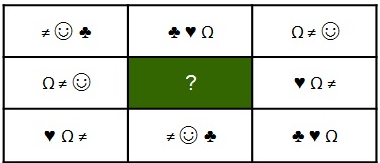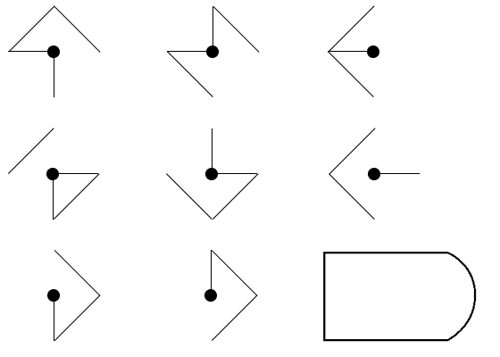Last updated: November 17h, 2025
Or, take our Korn Ferry Leadership Test course, which focuses on the KFALP and KF4D
Korn Ferry publishes a number of hiring and pre-employment exams. For this free practice test, we've divided them into leadership assessments and cognitive tests:
Korn Ferry Leadership Test Sample Questions
Before You Start: What are the Leadership Tests?
The Korn Ferry Assessment of Leadership Potential (KFALP) and Korn Ferry Four Dimensions (KF4D) are two research-backed personality assessments known collectively as the Korn Ferry Leadership Assessments.
While both tests rely on a common theoretical framework developed at Korn Ferry, they differ in purpose and structure.
- KF4D focuses on the here-and-now. It is designed to inform promotion and hiring decisions by assessing a candidate's readiness to start a specific leadership position in the near future.
- KFALP is more future-facing. It doesn't evaluate your fit for a specific role, but rather identifies whether you possess untapped leadership potential that your employer can cultivate over time.
Let's look at four types of questions that appear on the KFALP, KF4D,or both:
KF4D - Job Profile Questions
The purpose of this section is to map out what you believe are the ideal qualities for the role you are being tesed for.
It consists of three stages: selecting, sorting, and ranking cards that represent personality traits.
Tip
The purpose of Job-profile questions is to compare your view of what matters for success in the role, with the employer’s Success Profile (competencies, traits, and drivers the employer believes are essential).
So, why not just ask?
If you simply ask, “What traits does this job require?”, candidates can recite generic traits everyone agrees are good. The three-step structure forces you to trade off among equally desirable attributes, revealing your real, genuine priorities. That pattern can then be quantified and compared to the role’s Success Profile.
KF4D and KFALP - Job Analysis Questions
KF4D - Individual Exercises
The previous two sections have dealt with your perception of the job and the skills required to do it. The next part of the Korn Ferry test is called Individual Exercises. This one examines your individual character, and it features three distincts personality tests:
- What Drives You — personal and professional motivations
- Where Do You Excel — the strengths and qualities that define you
- Who Are You — your identity as an individual, employee and team member
Tip: Understanding Forced-Choice
Korn Ferry emphasises that many of its metrics are based on forced-choice rather than straightforward self-report questions.
What does this mean?
You may have noticed that on the Individual Exercises questions, you always have to rate equally desirable options. A typical personality question would simply ask you "are you thorough" or "are you outgoing", allowing you to answer in a way you believe will satisfy your examiner.
Korn Ferry requires you to make a choice: Are you more thorough or outgoing? This forces you to reveal your priorities. Another personality exam that uses forced-choice questions is the SHL OPQ.
Learn more about answering this type of questions on our Korn Ferry Course >>
KFALP – Raven's Progressive Matrices
The next stage of the Korn Ferry Assessment includes Raven's Progressive Matrices Questions, which evaluate Logical Inductive Reasoning.
Notably, these are not personality questions. However, they form an integral part of the KFALP. This is because Korn Ferry believes capacity (meaning cognitive ability and pattern recognition) is essential to leadership potential.
These sample questions will familiarize you with the real test format
Scroll down to sample just two questions.
Korn Ferry Cognitive Assessments: Talent Q Elements & Aspects
Talent Q Elements and Talent Q Aspects are both timed cognitive ability tests developed by Korn Ferry and designed to measure abstract reasoning, clerical (checking) skills, logical thinking, numerical reasoning, and verbal reasoning.
Both tests are strikingly similar, with minor differences. Talent Q Aspects sometimes features a behavioral questionnaire called the Aspects Styles, which focuses on personality questions.
Talent Q Elements and Aspects - Numerical Sample Questions
The Elements Numerical test consists of 12 questions, with 75-90 seconds per question.
Tip
Some helpful tips to solve numerical Talent Q questions:
- Familiarize yourself with the data first: Carefully go through the entire table, understand the headings conveying the meaning of each cell, and do your best to comprehend the data before trying to answer the question.
- Avoid relying on the answer choices: With up to 30 optional answers, you may be tempted to try to reverse engineer the answers. Refrain from this approach to prevent wasting precious time.
Korn Ferry Talent-Q Elements and Aspects - Verbal
The Elements Verbal test consists of 15 questions divided into bundles. Each question bundle is about a different text passage.
For the first question of each bundle, you will have 75 seconds to answer, providing extra time to read. For all subsequent questions in that bundle, the time limit falls to 60 seconds.
Korn Ferry Talent Q Elements - Logical
Next are the Logical Elements questions.
These are quite similar to the Raven questions found in the Korn Ferry Leadership Assessment. However, the Elements Logical questions can be rather more strenuous as they contain more choices.
There are 12 questions in this section. You will have 75 seconds to solve each question.
Let's examine an example to illustrate this.
Elements Logical Sample Question
Observe the following grid:

Can you identify which of the following shapes belongs in the missing square?

Tip
Here are some tips for tackling the Talent-Q Elements Loigcal:
- Quickly examine the sequence, paying attention to both the rows and columns. Try and identify noticeable patterns.
- Keep in mind — a single row or column may include several types of patterns.
- Did you find a pattern? Great! make sure that it applies to all the figures in a consistent way, both within rows and columns. Next, search for an answer that follows the pattern and adds another logical step.
Korn Ferry Talent-Q Aspects Checking
Checking questions measure your attention to detail and focus.
You will be asked to compare nearly identical strings of numbers and letters, and determine which are actually similar and which contain minuscule errors.
Each question contains about 5-6 strings to compare. There are eight questions in this section. You will have 60 seconds to complete each one.
Aspects Checking Sample Question
Compare 'column 1' with 'column 2' on each row:

Use the √ and X columns to mark whether the figures on columns 1 and 2 are identical or different.
Korn Ferry Talent-Q – Situational Judgement
Situational judgment is a common question type in many pre-employment assessments.
These questions present you with a work-related dilemma, typically one that requires choosing between two values, such as professionalism versus team morale or integrity versus discipline.
You are asked to choose the best and worst courses of action in response to the presented scenario.
This section contains 15 untimed questions.
JobTestPrep's Korn Ferry & Talent Q Prep Course
Accurate simulations, comprehensive coverage, expert guidance
Candidates often have days to prepare for the Korn Ferry assessments, with much riding on the results.
Our course is designed to help you gain complete confidence and familiarity with the test, using as much time as you have available.
Learn to avoid common pitfalls, recognize question types, and employ mental shortcuts and techniques to find the answers within the time limit.











